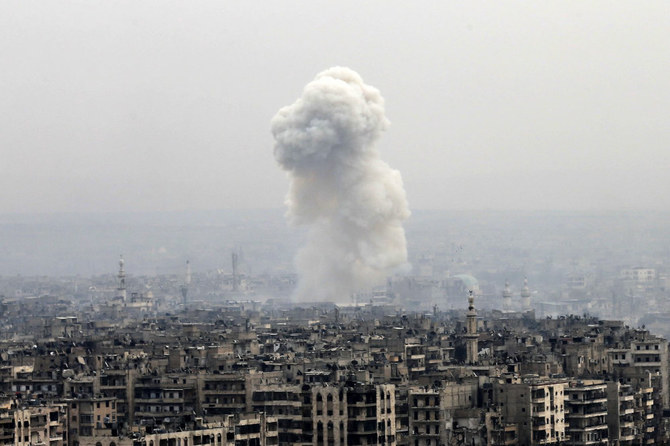Dr. Majid Rafizadeh
It is unrealistic to argue that Syria’s socioeconomic recovery will be smooth and swift. There are several reasons and obstacles that point to the premise that there is going to be a long road ahead for Syria as it seeks to implement a meaningful and substantial recovery that will benefit the majority of the Syrian people.
As a result of recent developments, some scholars, policy analysts and politicians may have set their expectations too high when it comes to Syria’s socioeconomic recovery. It is accurate to say that Damascus has been seeing some positive changes recently. For example, the Arab League in May readmitted the country, ending its decade-long suspension. Secondly, Syria’s bilateral relationships with the Gulf states have been improving as well. Other positive developments to point out include the phone call between UAE President Sheikh Mohammed bin Zayed Al-Nahyan and Syrian President Bashar Assad on bilateral ties between the two nations. In addition, Saudi Arabia has made the important decision to resume the work of its diplomatic mission in Syria.
While Syria’s readmission to the Arab League and the latest diplomatic rapprochements between Damascus and the Gulf states are indeed steps in the right direction, a lot of work remains to be done if the Syrian government truly desires to lead its nation into peace and prosperity. First of all, the conflict in Syria has not yet fully ended. Some parts of the country remain very unstable and insecure. This is particularly true of the southern areas of Syria, including the city of Deraa, which was the birthplace of the Syrian uprising and is also considered one of the most strategic places in the country. Deraa is close to the border with Jordan, as well as Syria’s Golan Heights region of Quneitra. There is also a major route from Deraa to the capital Damascus. Four members of Syria’s internal security forces were last week killed in an armed ambush by militants in the town of Muzayrib, which is located 11 km to the northwest of Deraa. During June, several people, including a 12-year-old boy, were killed by “unidentified assailants.”
One reason for the rising violence in southern Syria is drug smuggling. There has been a surge in drug trading and smuggling recently. A report published last year by the Center for Operational Analysis and Research stated of southern Syria: “While violence has plagued the region since its recapture by government forces in 2018, such violence is evolving as it becomes increasingly tied to the uptick in the drug trade, which is likely to overlap with related illicit activities that have a long track record in Syria: extortion, kidnapping for ransom, human trafficking, mercenarism, and arms trafficking. Syria’s drug trade will not go anywhere soon, and while coverage to date has focused on the impacts that will be felt in destination markets far afield, its cost in blood is likely to be borne most heavily by Syrians in Syria, especially in the south.” In addition, Daesh has not completely vanished from Syria and operates in scattered areas such as Deraa and the Syrian desert. In order to generate revenue, the terror group attempts to operate in places where there are vital resources such as oil. Daesh’s activities have also been seen recently in the northeastern city of Hasakeh, as well as Deir Ezzor. Nevertheless, it is important to point out that Daesh has lost significant influence in Syria, since at one point it was controlling nearly a third of the country’s territory. But years of offensives by the antiterrorism coalition have inflicted significant damage on its power in Syria. In addition to heightened insecurity and the drug smuggling issue, it is critical to note that Syria’s path to recovery is multifaceted and complex. For one thing, the economy is crippled after years of conflict, which has inflicted an unimaginable degree of devastation. Syria’s gross domestic product has shrunk by more than half and its currency has lost a significant portion of its value, leading the World Bank to rank it as a low-income country. Syria is facing an unprecedented economic crisis. Several factors have contributed to this problem. For example, the internal conflict, which began more than 12 years ago, has had a negative impact on the nation’s economy.
We should be realistic about the recovery of a nation that has endured such a long civil war. Civil wars can inflict devastating damage on infrastructure and, more importantly, disrupt production and manufacturing processes. For example, Syria’s currency, which was trading at about 47 pounds to the US dollar just before the unrest erupted in 2011, recently hit an all-time low and $1 is now worth about 9,000 Syrian pounds. Inflation also hit 139 percent in 2022. This placed it fourth in the world in terms of highest inflation rates, only ranking behind Venezuela, Sudan and Lebanon, according to World Population Review. In a nutshell, in spite of the fact that Syria has recently been experiencing positive developments, such as being readmitted into the Arab League and improving its ties with the Gulf nations, Damascus’ route to full socioeconomic recovery is going to be extremely difficult and will most likely take a very long time.







